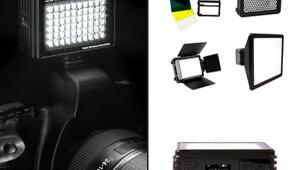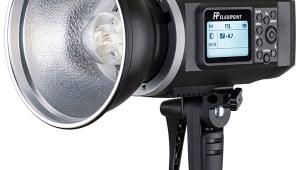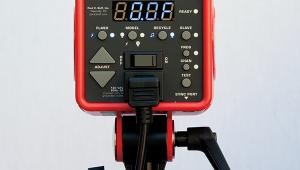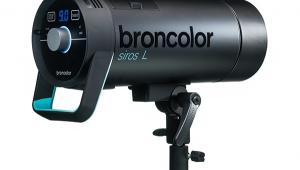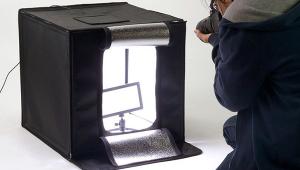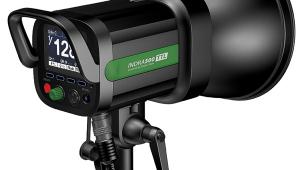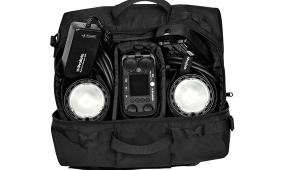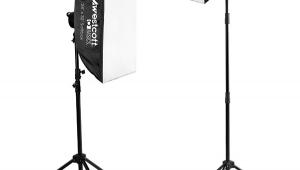Wireless TTL Flash: What It Is; How It Works; What’s Available
Increasingly, manufacturers are coming out with cameras and speedlights that support wireless TTL flash operation. What this means for you is a simplified approach to using dedicated flash units off camera—especially multiple speedlights, alone or mixed with other light sources. With wireless TTL you’re free to move the off-camera flash a few inches or a few feet here or there, not to mention modifying the light in any desired fashion, and all without having to recalculate exposures, use a flash meter, and link everything together with wires. The camera’s metering system does the math for you. Beyond that, wireless TTL assures you that all speedlights on and off camera will fire in sync.

© Jack Neubart
All this comes to you courtesy of some sophisticated circuitry built into the camera and flash, but keep in mind that while microprocessors may do the thinking, you still have to do the planning—and some thinking, to boot.
All well and good, you say, but I’ve got questions. Which flash units are TTL wireless out of the box? What are the limits to wireless TTL? Can I mix and match different flash units—that is OEM (Original Equipment Manufacturer) and non-OEM brands? Are there other devices, aside from flash units themselves, that I can use to benefit from this capability? And can I use wireless TTL to take advantage of slow sync, second (rear/trailing) curtain sync, and high-speed (FP) sync. To answer the last question right off the top, yes, you can, where these features are already supported. As for cross-operation (OEM/non-OEM), experience has shown that systems can reliably work together—but the extent of this cross-functionality will vary with the features built into the non-OEM flash.
Channels, Groups, Output
Each trigger and remote flash is first assigned to the same “channel,” or frequency, to ensure they fire in sync. You can reassign devices to a different channel to prevent other triggering devices pulsing on the same frequency from inadvertently triggering your strobes. But keep in mind that once you do that you have to reassign every link in that chain in order to trigger all the strobes together. You may also want to set different channels on different speedlights for some special lighting effects involving selective triggering at different intervals during a long (or multiple) exposure. Most, if not all, systems support multiple channels (usually four).
In addition, each remote flash may be assigned to a “group.” Group A can, for example, be the key light, Group B the background light, and Group C the hairlight; and each group can consist of one or several speedlights (with three strobes per group being a practical limit). What this allows you to do is to vary output levels on individual lights (or clusters of lights) to suit your purposes—all by way of the master controller. It also means that you don’t have to move or scrim each remote flash as a means of adjusting output and lighting ratios. The norm is two or three groups, although select wireless TTL systems may not support group assignments.
Wireless TTL Shoe-Mount Flash
Note 1: Compatibility is usually limited to products from the same manufacturer and/or, in the case of non-OEM products, a designated manufacturer. However, this is no guarantee that non-OEM flashes will support every feature when mixed with OEM or other non-OEM products when used wirelessly. OEM here refers to the original camera equipment manufacturer. Note 2: Prices are street, based on popular photo shopping websites. Note 3: With few exceptions, compatible models listed at the end of each entry offer only remote capability. Please check with your retailer or the manufacturer. Note 4: Only the Quantum is a radio frequency remote system. Only currently available models are listed.
Canon Speedlite 580EX II ($474): operates as master/remote; four channels/three groups; maximum wireless range: 49.2’ indoors, 32.8’ outdoors. Other compatible Canon wireless TTL shoe mounts: 430EX II ($284); 320EX ($249); 270EX II ($169). Wireless TTL accessory: ST-E2 Speedlite Transmitter ($224).

Metz Mecablitz 58 AF-2 digital ($399/for Canon, Nikon, Olympus/Panasonic/Leica, Pentax/Samsung, Sony): operates as master/remote; four channels/three groups. Other compatible Metz wireless TTL shoe mounts: 50 AF-1 digital ($229); 44 AF-1 digital ($199).

Nikon SB-900 Speedlight ($489): operates as master/remote; four channels/three groups; maximum wireless range: 33’. Other compatible Nikon wireless TTL shoe mounts: SB-700 ($329); SB-600 ($319); SB-R200 ($159). Wireless TTL accessories: SU-800 Wireless Speedlight Commander ($249); SU-4 Wireless Remote TTL Flash Controller ($85).

Nissin Di866 Mark II ($349/for Canon, Nikon, Sony): operates as master/remote; four channels/three groups on Canon/Nikon models/two groups on Sony version; maximum wireless range: 82’. Other compatible Nissin wireless TTL shoe mounts: Di622 Mark II ($229); Di466 ($139).

Olympus FL-50R ($499): operates as remote only; four channels/three groups; maximum wireless range: 33’. Other compatible Olympus wireless TTL shoe mounts: FL-36R ($229).
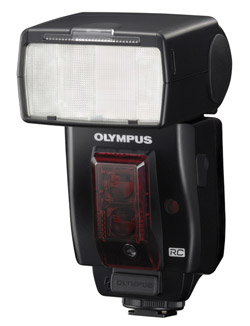
Pentax AF540FGZ ($479): operates as master/remote; four channels (groups not supported); maximum wireless range: 13’. Other compatible Pentax wireless TTL shoe mounts: AF360FGZ ($339).

Quantum Instruments Qflash TRIO ($875/for Canon or Nikon, with Qlink and FW8R FreeXwire receiver): operates as master/remote; eight channels/three groups; maximum wireless range: 600’. Other compatible Quantum wireless TTL shoe mounts: not applicable.
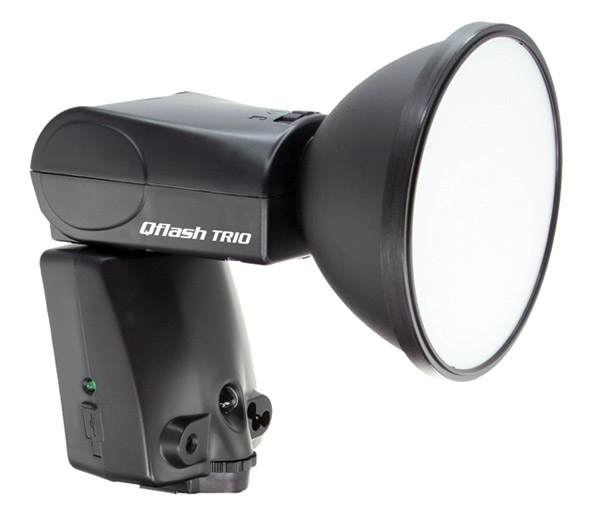
Sigma EF-610 DG Super ($255/for Canon, Nikon, Pentax, Sigma, Sony): operates as master/remote; three channels (groups not supported); maximum wireless range: 30’. Other compatible Sigma wireless TTL shoe mounts: not applicable.

Sony HVL-F58AM ($499): operates as master/remote; two channels/three groups; maximum wireless range: 48’. Other compatible Sony wireless TTL shoe mounts: HVL-F43AM ($349).

Vivitar DF-483 ($179/for Canon or Nikon): operates as master/remote; four channels/three groups; maximum wireless range: 33’. Other compatible Vivitar wireless TTL shoe mounts: not applicable.

Wireless TTL Macro Flash
Note 1: Compatibility is usually limited to products from the same manufacturer and/or, in the case of non-OEM products, a designated manufacturer. However, this is no guarantee that non-OEM flashes will support every feature when mixed with OEM or other non-OEM products when used wirelessly. OEM here refers to the original camera equipment manufacturer. Note 2: Prices are street, based on popular photo websites. Only currently available models are listed.

Canon MT-24EX Macro Twin Lite ($799) and MR-14EX Macro Ring Lite ($549): each macro flash operates as master, on four channels governing three groups to a maximum range of 16.4’ indoors/9.8’ outdoors.

Metz Mecablitz 15 MS-1 digital ($405/compatible with all the following out of the box, via on-board settings: Canon, Nikon, Olympus/Panasonic Four Thirds, Pentax/Samsung, Sony): ring flash operates as remote while clipped to front of lens or off camera; four channels/three groups.

Nikon R1C1 ($719/shown) and R1 ($459): twin-head systems triggered by a commander (included SU-800 on R1C1; built-in flash for R1); four channels/three groups.
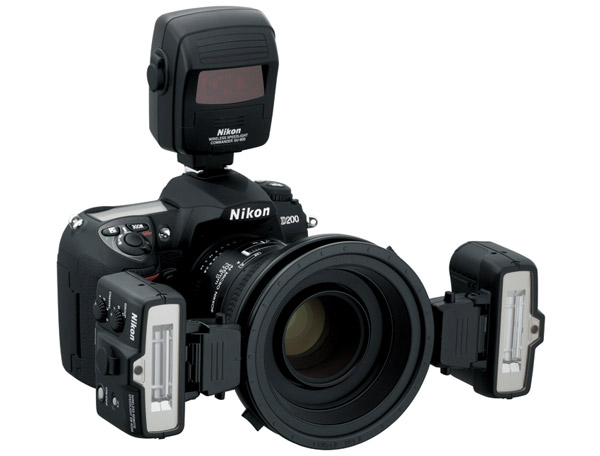
Sigma Electronic Flash Macro EM-140 DG ($379/for Canon, Nikon, Pentax, Sigma, Sony): operates as master on four channels.
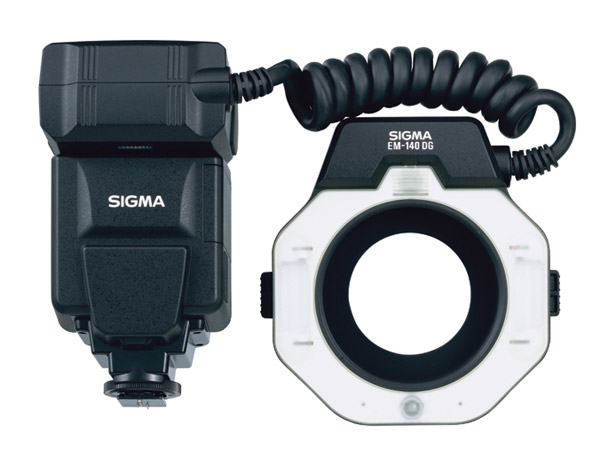
Optical Triggering: The Good And The Bad
Optical signals have a limited reach, to maybe 30 or 40 feet, sometimes more. This form of flash sync may find further limitations when surrounded by large open spaces owing to the lack of reflecting surfaces nearby. When used in open areas, especially outdoors, limit the distance of the remote strobes to an unobstructed direct line of sight, preferably within a few feet of the triggering pulse. Bounce panels may help to direct the flow of signal traffic. Also, extremely bright light sources are known to inadvertently trigger and limit the range of optical sensors, which may dictate against using them under direct sunlight, for example.
Defining Terms
While the process of working with wireless TTL flash may be largely automated and transparent to the end user, there is still considerable room for your input. To begin, some settings have to be made initially. And for now we’re speaking strictly of wireless TTL operation that is triggered through the camera via an optical pulse, not radio frequency. (Note: the optical pulse/signal may consist of infrared and/or visible light, one or the other being prevalent in response to conditions at hand and respective of design.)
Our immediate option is a triggering pulse that comes from the on-board flash, whether that’s the camera’s built-in flash (on cameras with this provision) or a dedicated flash seated in the camera’s hot shoe. This now becomes the “master,” “controller,” or “commander.” Unfortunately, different makers use different terms for different functions, and it can get confusing.
Broadly, the “master” is the triggering flash that also contributes to the exposure while controlling output for all strobes involved. “Controller” applies to the unit when used solely to trigger and control output from the off-camera strobes—it does not factor into the exposure. While “commander” can also be used for an external flash controller, let’s simplify things and say “commander” refers to the built-in flash, which can serve either as master or controller, depending on how it’s used: contributing to flash output or not, respectively, while still controlling output on each external strobe. One key proviso: for the built-in flash to serve this function, it must be in the raised/ready position; otherwise the wireless, off-camera strobes will not fire. And to ease the dialog further, let’s simply refer to external triggering speedlights as “master.”
Wireless TTL settings revolving around the built-in flash are made in the camera’s menu. Settings for the master external flash are made via a switch and/or menu on the flash unit itself.
Non-Flash-Emitting Triggering Devices
If you don’t use a flash to trigger the remote strobes, you can use a TTL-flash-compatible wireless trigger, or “transmitter,” seated in the camera’s hot shoe. This can be an optical/infrared or Radio Frequency (RF, or simply radio) system. Optical/infrared transmitters are normally the domain of the camera manufacturer. TTL wireless radio remote systems, however, are offered by a select few non-OEM manufacturers.



Wireless TTL radio systems also require a secondary unit—a “receiver”—for each remote flash, which can get expensive in an elaborate lighting setup. The receiver has a dedicated hot shoe for the flash and acts as a conduit for the triggering radio pulse. A device that can be used as either transmitter or receiver is called a “transceiver,” its actual function reflecting what it’s connected to: camera or remote flash.
Radio systems are the best choice under conditions that are less than optimal for optical systems. Radio signals can reach distances of several hundred feet, which gives them an advantage when the remote speedlights are positioned outside the range for a typical optical device. And radio signals easily circumvent most obstacles, so speedlights attached to radio receivers can be hidden away and still fire as needed.
How It Works: The Off-Camera Flash
The off-camera speedlight that receives the triggering pulse to fire in sync is called the “slave” flash in some circles, but I prefer the term “remote.” This setting is made on the flash unit itself. To avoid unnecessary interruptions, set each remote flash so that it does not enter standby/sleep mode while in wireless operation (then reset it later).
You can readily recognize when the flash is set to remote status by a constantly pulsing beam. The wireless sensor is normally located on the front of the flash, which means that sensor and pulse source should be facing each other. Note that nearby reflecting surfaces may mitigate partially or entirely against the need for the sensor to face the trigger squarely. However, some flash units employ tighter sensor angles and require more diligence in this regard.
I should add that select macro flash systems also support wireless TTL. Depending on design and with the appropriate settings, the macro unit may assume the role of master or remote flash (usually one or the other).
Contacts
Contact these manufacturers for more information on their Wireless TTL Shoe-Mounts/Ring Flash/OEM Triggering Devices:
• Canon (www.usa.canon.com)
• Metz (www.metz.de/en)
• Nikon (www.nikonusa.com)
• Nissin (www.nissindigital.com)
• Olympus (www.olympus america.com)
• Pentax (www.pentaximaging.com)
• Quantum Instruments (www.qtm.com)
• Sigma (www.sigmaphoto.com)
• Sony (www.sonystyle.com)
• Vivitar (www.vivitar.com)
Contact these manufacturers for more information on their Wireless TTL Radio Remote Systems:
• PocketWizard (www.pocketwizard.com): MiniTT1; FlexTT5 (for Canon or Nikon)
• Quantum Instruments (www.qtm.com): FreeXwire and Pilot for Canon/Nikon/Quantum Qflash (additional accessories may be required)
• RadioPopper (www.radiopopper.com): for Canon/Nikon/select others


